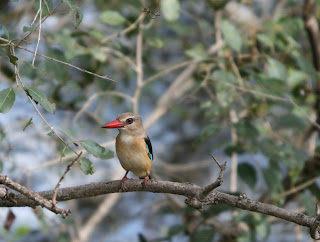
Photo by Kimberley Pittman-Schulz
My wife and I greatly enjoy our proximity to the Pacific Coast and walking along the many beaches here in Humboldt County.
We are volunteers with COASST as citizen scientist looking for dead beached birds that have washed ashore.
We've been involved with the program for a little over one year now and both of us look forward each month to our purposeful walk on "our" beach.
The way I found out about the program is interesting indeed.
I was checking out the mouth of the Mad River in early Febuary of 2009 and found a bottle with a lid and picked it up to see if there was a note in it.
There wasn't so I decided to put one in it and threw it into the river nearly 400 meters from the mouth. Perhaps I thought someone far away in some exotic place would eventually find it.
Gary Lester a local highly regarded birder and COASST volunteer found the bottle with the note and notified me by email the very next day.
Shortly after that I met Gary and his wife in person and he told me of the COASST volunteer program.
I took the COASST training class held in Trinidad, Ca and was assigned Clam Beach south.
It includes the area from the southern parking lot of Clam Beach County Park south to the Vista Point overlook approximately 1.7 Kilometers one way. It is a very flat and wide beach with the mouth of Strawberry Creek intersecting it about a third of the way.
 Turkey Vultures and Ravens scavenging a dead Marine Mammal on Clam beach.
Turkey Vultures and Ravens scavenging a dead Marine Mammal on Clam beach.We sometimes find dead Marine mammals that have washed ashore including this scavenged Dolphin.
The purpose of the project is to monitor the marine ecosystems health in the Pacific Northwest. It is a cooperative effort by hundreds of volunteers from the Aleutians south to Humboldt County, California.
Assigned beaches are surveyed each month and data is collected on special data sheets. The data is analysed by scientist at the University of Washington and assembled into an annual report.
Data from all of the beaches surveyed reveal patterns which may help biologist make future decisions on the conservation of species of concern.
We enjoy the project for several reasons which include doing something outdoors together as a team and contributing in a small way to our knowledge about the Marine ecosystem.

During our surveys we also enjoy getting close veiws of live birds that frequent our coastal beaches.
 Western Sandpiper(Calidris mauri)
Western Sandpiper(Calidris mauri)I must admit that it isn't always fun when you're hunched over a badly decayed specimen that falls apart at the slightest tug while trying to measure and Identify it in a cold wind.
The majority of birds found have been scavenged to some extent by other birds.
When we find one it is measured (tarsus,wing chord, bill) and identified when possible with the use of a key. We then mark it with color coded plastic cable ties and photograph it.
We have not experienced a "Wreck"* yet either and when and if we do we will be sure to call out the troops for help.
Most days we try to pick up as much litter that we find washed ashore.
Below is an example of a days find that we carried back to the dumpsters.
 If I were younger and looking for a job it would be interesting to put this experience on my Resume and wait for a curious response by the potential employer during a interveiw.
If I were younger and looking for a job it would be interesting to put this experience on my Resume and wait for a curious response by the potential employer during a interveiw.*A wreck is a large number of single species, or group of species washed ashore sometimes resulting in 10 to 100 times normal.








 White-Fronted Bee-Eater (Merops bullockoides)
White-Fronted Bee-Eater (Merops bullockoides)











































